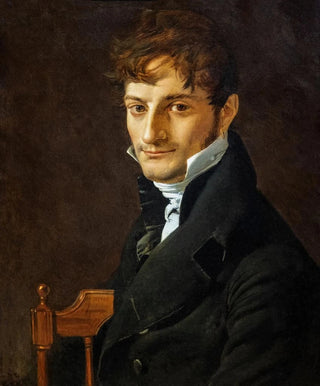Art print | Portrait of Belvèze-Foulon - Jean-Auguste-Dominique Ingres Source: Reproduction | Portrait de Belvèze-Foulon - Jean-Auguste-Dominique Ingres


View from behind

Frame (optional)
Portrait of Belvèze-Foulon - Jean Auguste Dominique Ingres – Captivating Introduction
In the world of art, some works transcend mere frames to become true testimonies of their era and human emotions. The "Portrait of Belvèze-Foulon" by Jean Auguste Dominique Ingres is one of those creations that capture the very essence of the personality it depicts. This painting, imbued with finesse and depth, transports us into the 19th century universe, where realism and individual expression take shape through the brush of a master. The art print of this iconic piece is not limited to a simple imitation; it invites an exploration of the emotions and thoughts that guided the artist in his quest for beauty.
Style and uniqueness of the work
Ingres's style is often characterized by formal rigor and meticulous attention to detail, and the "Portrait of Belvèze-Foulon" is no exception. The composition is marked by clear lines and a harmony of colors that make the subject both lively and timeless. The artist skillfully plays with light and shadows to emphasize the features of the model, creating an atmosphere that is both intimate and solemn. The posture of the figure, slightly turned, suggests a dynamic that captures the viewer's eye, while the simple background highlights the psychological depth of the portrait. Ingres manages to merge realism and idealization, offering a vision that is both faithful and sublimated of Belvèze-Foulon, a man whose gaze seems to carry the weight of his reflections.
The artist and his influence
Jean Auguste Dominique Ingres, an emblematic figure of Neoclassicism, knew how to mark his era with a unique approach to painting. His work, often focused on portraiture, reveals a deep understanding of human psychology. Ingres does not merely depict his subjects; he interprets and transcends them. His influence extends well beyond his time, inspiring many artists who sought to capture the complexity of the human soul through their art. Rooted in the classical tradition, he also paved the way for later movements, notably Romanticism, by introducing elements of

Matte finish

View from behind

Frame (optional)
Portrait of Belvèze-Foulon - Jean Auguste Dominique Ingres – Captivating Introduction
In the world of art, some works transcend mere frames to become true testimonies of their era and human emotions. The "Portrait of Belvèze-Foulon" by Jean Auguste Dominique Ingres is one of those creations that capture the very essence of the personality it depicts. This painting, imbued with finesse and depth, transports us into the 19th century universe, where realism and individual expression take shape through the brush of a master. The art print of this iconic piece is not limited to a simple imitation; it invites an exploration of the emotions and thoughts that guided the artist in his quest for beauty.
Style and uniqueness of the work
Ingres's style is often characterized by formal rigor and meticulous attention to detail, and the "Portrait of Belvèze-Foulon" is no exception. The composition is marked by clear lines and a harmony of colors that make the subject both lively and timeless. The artist skillfully plays with light and shadows to emphasize the features of the model, creating an atmosphere that is both intimate and solemn. The posture of the figure, slightly turned, suggests a dynamic that captures the viewer's eye, while the simple background highlights the psychological depth of the portrait. Ingres manages to merge realism and idealization, offering a vision that is both faithful and sublimated of Belvèze-Foulon, a man whose gaze seems to carry the weight of his reflections.
The artist and his influence
Jean Auguste Dominique Ingres, an emblematic figure of Neoclassicism, knew how to mark his era with a unique approach to painting. His work, often focused on portraiture, reveals a deep understanding of human psychology. Ingres does not merely depict his subjects; he interprets and transcends them. His influence extends well beyond his time, inspiring many artists who sought to capture the complexity of the human soul through their art. Rooted in the classical tradition, he also paved the way for later movements, notably Romanticism, by introducing elements of






